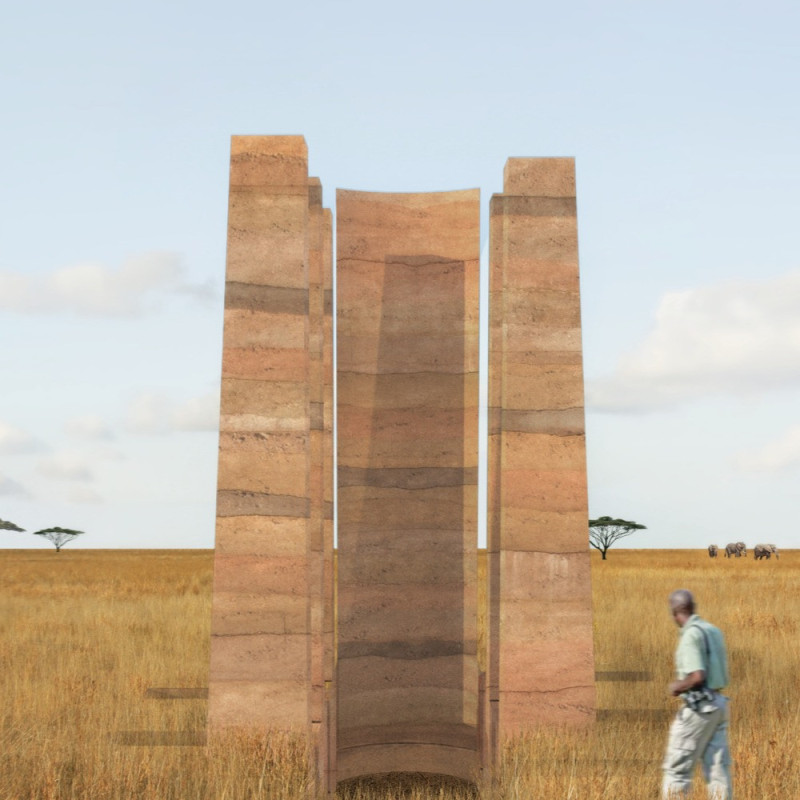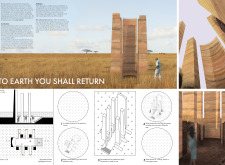5 key facts about this project
Sustainable Material Use
The core of the design lies in its use of rammed earth, a material known for its ecological benefits and thermal efficiency. Rammed earth construction minimizes environmental impact due to its reliance on locally sourced, natural materials. The textured façade demonstrates various tones and patterns, showcasing the aesthetic potential of earth as a building material. The architectural design maximizes the advantages of thermal mass, creating a stable indoor climate without reliance on mechanical heating or cooling systems.
Unique Design Approach
The project stands out through its circular configuration and the use of vertical pillars, which inform both structural integrity and aesthetic appeal. Each pillar serves not only as a support element but also as a visual framing device, directing attention upward and creating a sense of verticality. The excavation process of the site plays a critical role, allowing the structure to emerge organically from the landscape. The earth extracted during excavation is repurposed in the construction of the pillars, reinforcing a commitment to minimizing waste while respecting the natural environment.
Lifecycle Considerations
An exceptional aspect of this project is its planned deconstruction phase. After serving its educational purpose, the pavilion is designed to be dismantled, with the materials returned to the site. This approach emphasizes the transient nature of the structure and promotes a lifecycle perspective in architecture, which is often overlooked in conventional design. The project's architecture serves as both a built environment and a narrative device, inviting visitors to engage with themes of sustainability and ecological stewardship actively.
For those interested in exploring the architectural nuances of "To Earth You Shall Return," reviewing architectural plans, sections, and various design elements will provide deeper insights into its innovative approach and functionality.























